Informal assessments are important for obtaining data that can be used to inform judgments about student learning. These assessments allow teachers to make informed decisions about where to take the subsequent instruction. The following is an example of a recent informal assessment that I conducted with my students at the end of a phonics lesson.
Learning Segment
Informal-Assessment-Learning-Segment-KenyonDescription
Over the course of three lessons, the majority of the students in the class had a good grasp on the concept of the cvcc “-ng” glued sounds. In the third assessment from Lesson 3, I conducted an informal assessment by observing what the students wrote when I dictated a sentence to them. This assessment was meant to check for understanding of the “-ng” (ang, ing, ong, ung) cvcc glued sounds concept. In the assessment, I dictated the following sentence to the students for them to write:
“Tom sang my song to the kids.”
Prior to dictating the sentence, I reviewed different cvcc “-ng” glued sounds with the students. I encouraged them to sound out and tap out each of the words on their fingers before writing the word—especially when blending the consonant with the glued sounds. I continued this through dictating the sentence. First, I said aloud all seven words from the sentence and had the class count the number of words in the sentence with me. Next, I broke down each word of the sentence for the students—encouraging them to say aloud and tap out each word if needed. I modeled this technique several times. To help students differentiate between the “-ong” and “-ung” sounds I elongated the vowel o~ and emphasized the ending /g/ sounds.
Evidence
- “Tom s my”
- “To m sagdmy ƨongToTheCIDS”
- “Tom s i ng my song to the kibs.”
- “Tom sang my sang To The kibs!”
- “Tom sang my song To den ciDS”
- “Tom sang mi song”
- “Tom sang my song To The KiDS”
- “Tom sang my song to the kids”
- “Tom sang my song to the Kibs”
- “Tom sang my Song To The KidS”
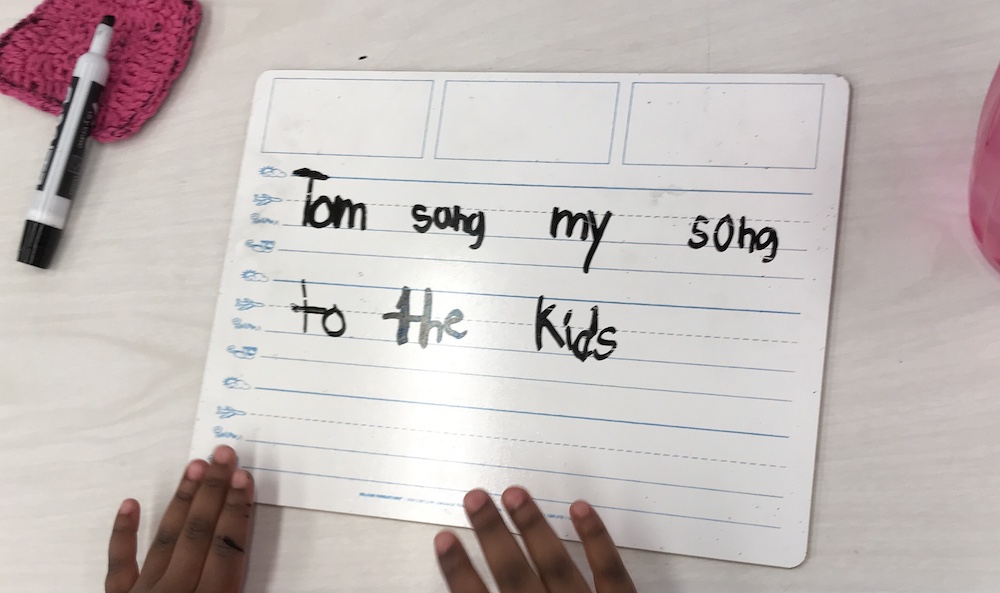
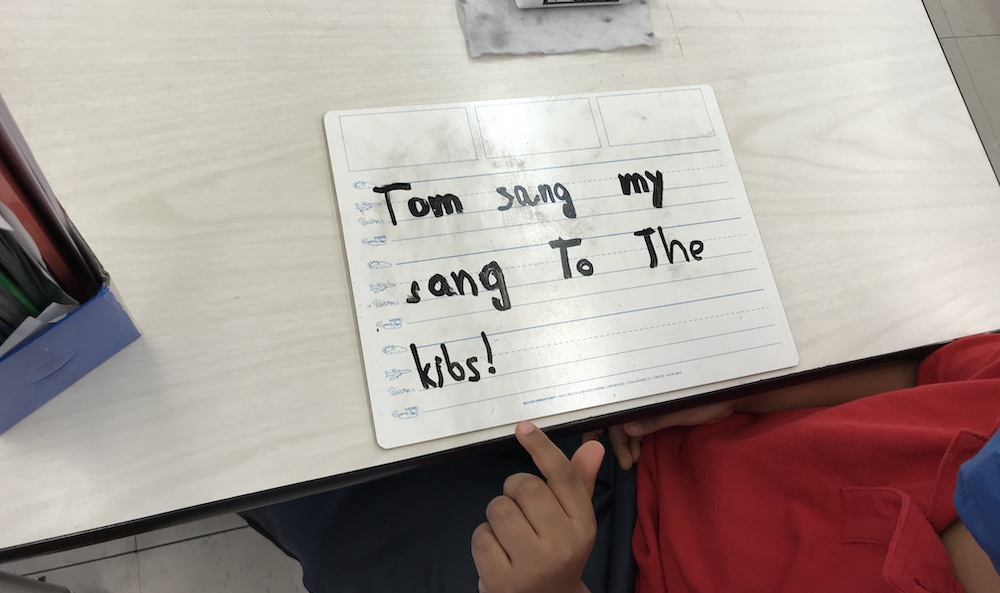
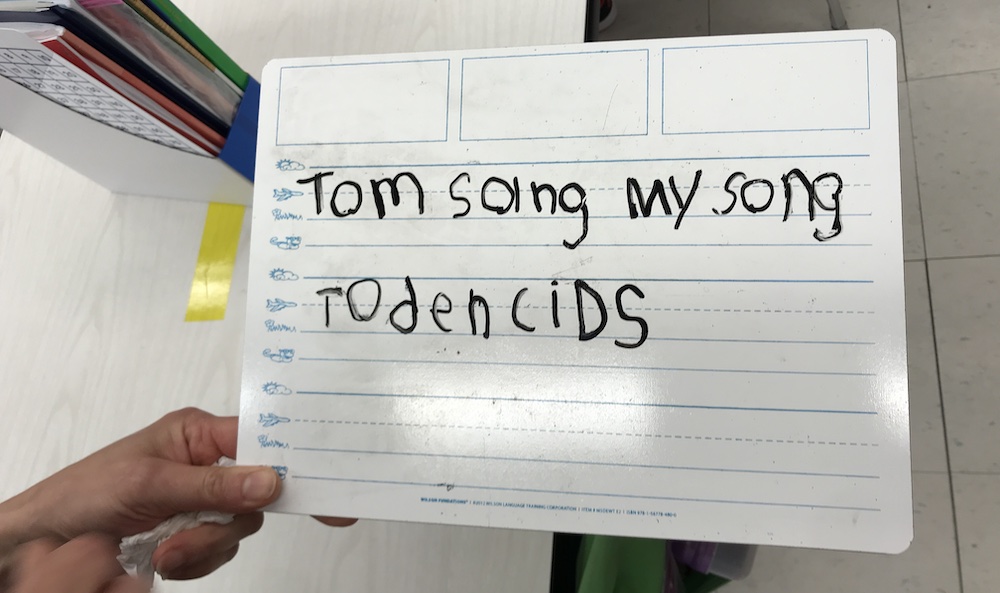
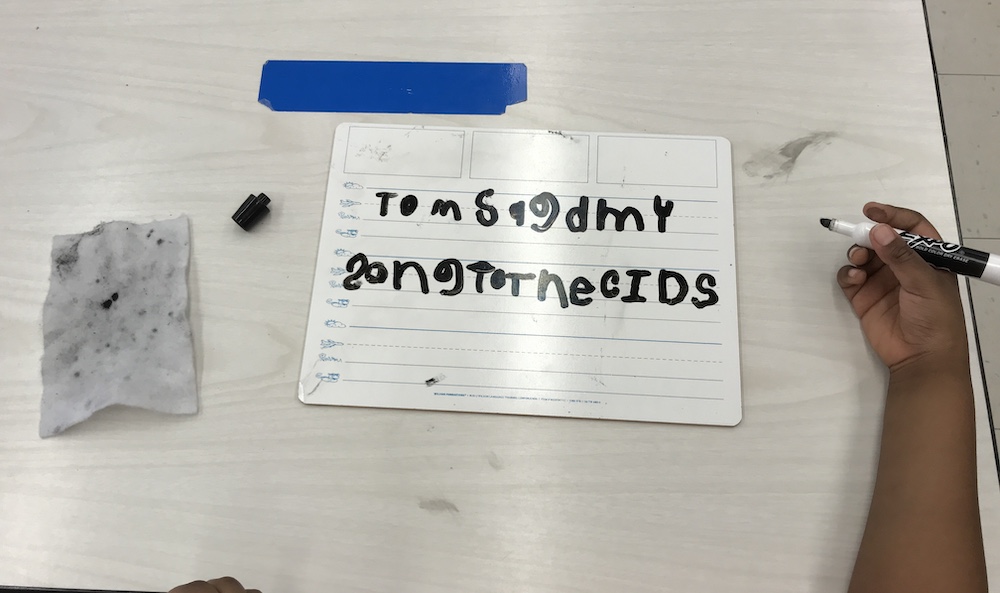
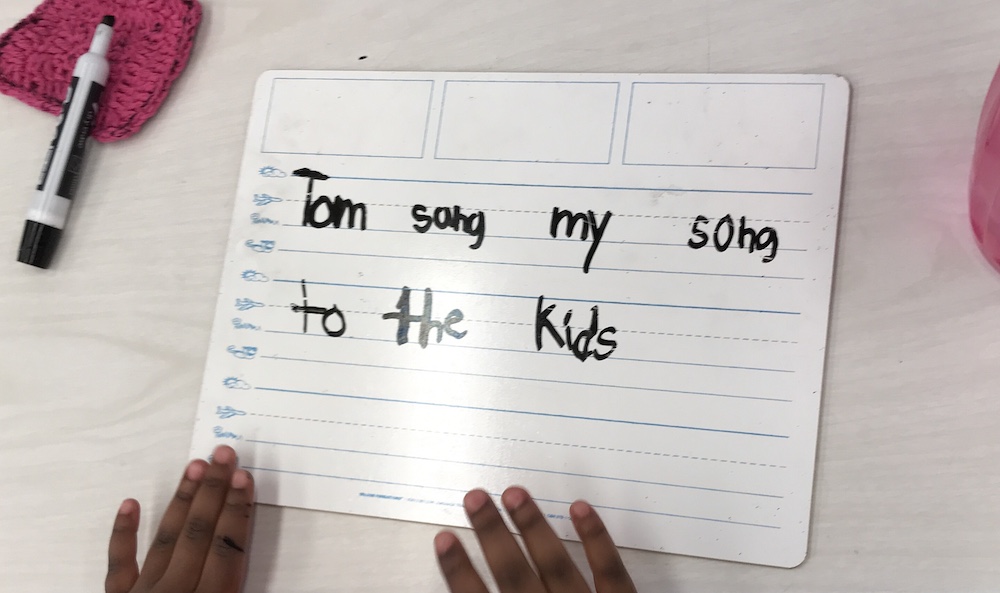
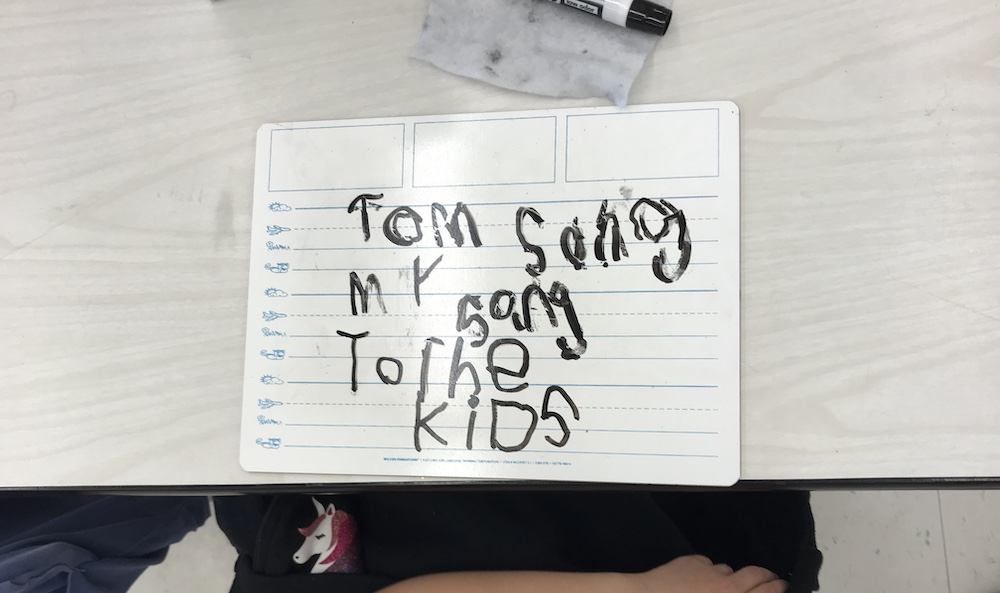
Analysis
The following is a brief analysis of my findings. For the full detailed report, please view the full document at the end of this page.
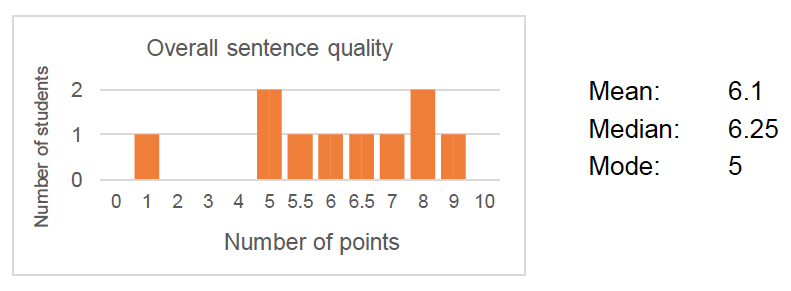
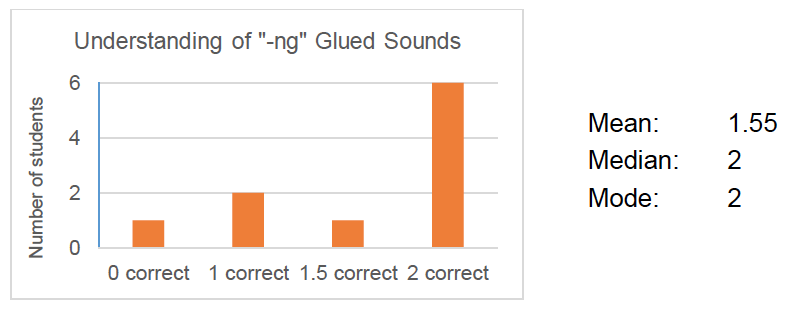
Based on my rubric, the average score for overall sentence quality was a 6.1 out of 10 or 61%. Many points were lost on incorrect print concepts like spacing, capitalization, and punctuation. Additional points were lost on misspellings of words. The average score for correctly understanding and writing the correct cvcc word was 1.55 out of 2 or 78% correct. Most students were able to both write the seven words correctly and differentiate the different the sounds of the vowels in the words containing vcc “-ng” glued sounds.
This third assessment told me the most information about not only where they are at with their understanding of the glued sounds concept but about where they are with their phonics development. I felt confident that after a couple more lessons, we would be proficient enough and comfortable transitioning to our next segment featuring “-nk” glued sounds (ank, ink, onk, and unk). The majority of the students (with the exception of 3 students) in this class are able to differentiate the different sounds that the vowels make and most all of the students in this class are comfortable enough with the sounds that consonants make at the beginning of a word.